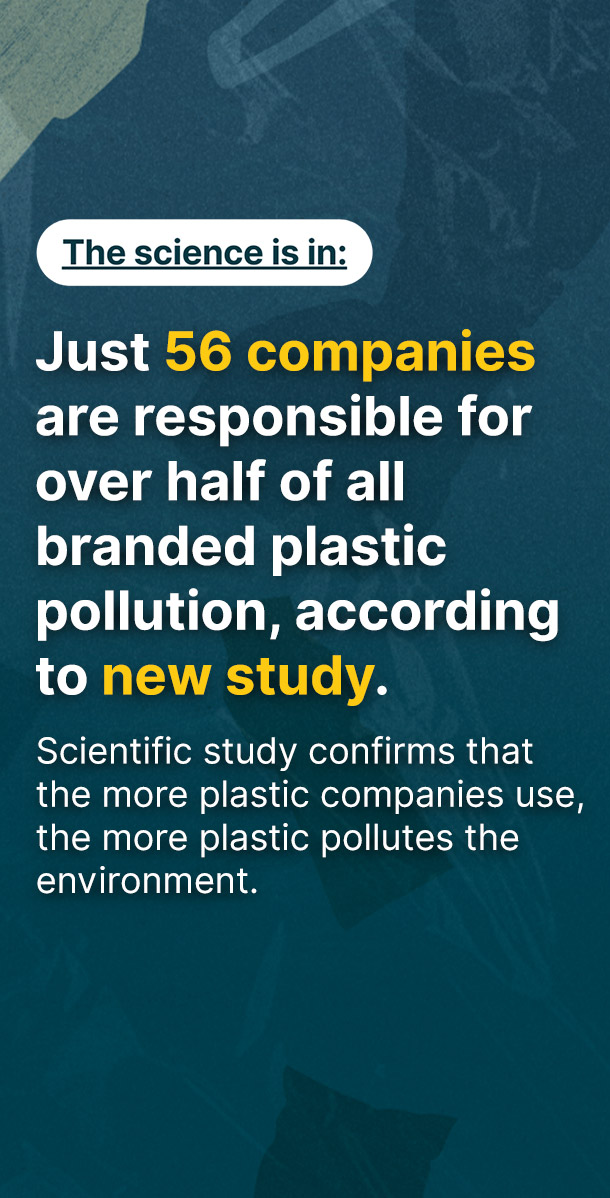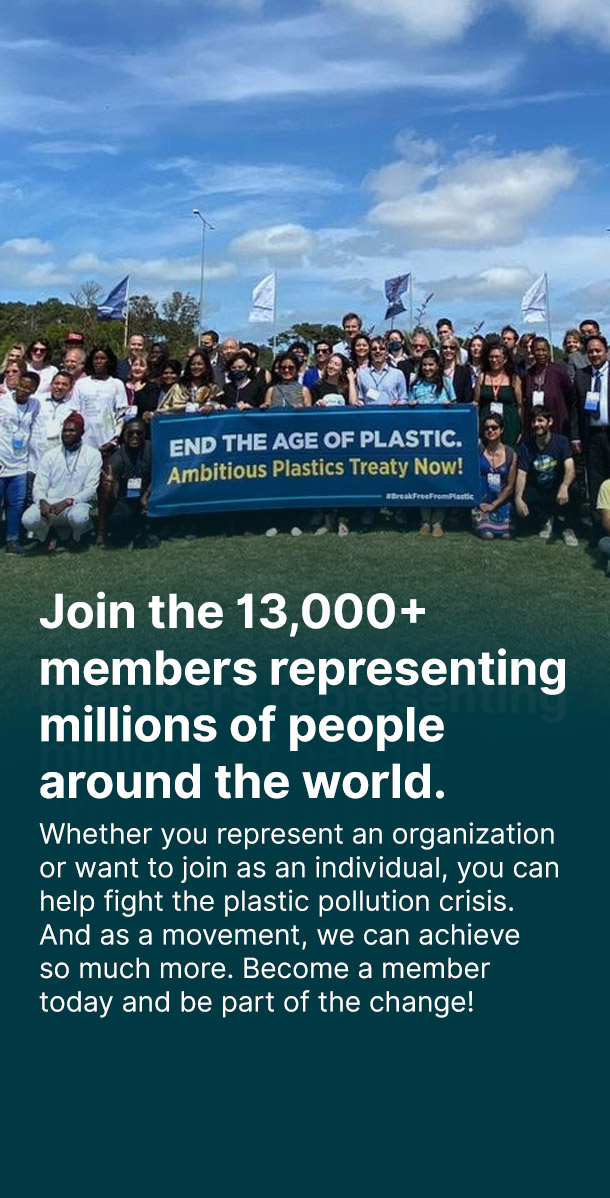Sachets may be small in size, but the collective impact of these single-use plastic packets has brought about a global crisis that now endangers the future of our planet. Every year, billions of sachets end up polluting the streets, waterways, and communities, especially in countries across the Global South.
At the center of this crisis are multinational corporations that have built their business models around disposable packaging while promoting corporate sustainability pledges that sound bold but rarely deliver.
Even as they publicly advocate for sustainability through aggressive public relations and reporting, little changes actually take place behind the scenes. These same companies flood the market with non-recyclable packaging, including sachets, and then tout limited trials or minor recycling tweaks as proof of progress.
At this point, what is corporate sustainability if not poor attempts at brand building and damage control?
This article explores how such narratives and “green language” often serve as a strategic deflection for companies to appear environmentally responsible while avoiding real change. We'll dig into what's really happening with corporate sustainability claims, explore the hidden costs of sachet waste, and spotlight the people and movements pushing for honest, lasting solutions.
To start, we need to look at a key tactic companies use to shape public perception — greenwashing.
Greenwashing in the Sachet Industry
Greenwashing is a public relations tactic often used by companies to trick consumers into thinking that they're more environmentally responsible than they actually are. They either exaggerate or fabricate environmental efforts to mask questionable practices using feel-good language, vague claims, or selective facts.
Six years’ worth of brand audit data specific to the sachet industry has highlighted major fast-moving consumer goods (FMCG) giants like Unilever, Nestlé, Coca-Cola, Danone, and Procter & Gamble as prime offenders.
These companies run flashy sustainability campaigns that highlight recyclability, so-called “natural” ingredients, or carbon neutrality. But behind the cameras and social media efforts, they continue to flood markets with single-use multilayer sachets that are difficult to recover, and nearly impossible to recycle. The gap between what they say and what they do is staggeringly wide.
Take Unilever, for example. In 2022, a TV ad for its Persil detergent was banned in the United Kingdom because its environmental claims couldn't be backed up. Regulators found that the ad gave a misleading impression of the product's overall environmental impact.
Meanwhile, other companies, like Coca-Cola, Nestlé, and Danone, have made similar claims — that their plastic bottles are “100% recycled” or “100% recyclable” — despite infrastructure and material limitations that make such promises misleading, especially in countries where most sachets are used.
These kinds of claims distract from the bigger issue: the continued production of single-use sachets. Instead of changing how their products are made and packaged, these companies use green messaging to deflect criticism and retain a business model that relies heavily on excessive plastic production.
It's branding with little substance and even fewer attempts at real sustainability. To assess whether these companies are delivering on their promises, we must look beyond the headlines and uncover what's being omitted from the picture.
Why Corporate Sustainability Pledges Are Often Futile
Commitments to make all packaging recyclable, reusable, or compostable by 2025 are proving hollow. Despite bold promises, companies like Unilever and Nestlé continue to use sachets, a format known for being resistant to meaningful recycling.
Unilever's much-publicized CreaSolv initiative in Indonesia, for instance, was initially promoted as a breakthrough solution for recycling sachets. But the pilot plant quietly shut down. The technology struggled with mixed-material sachets, and as a result, it created a lot of unusable residue and produced recycled material that was of too low quality to be useful.
Instead of moving away from sachets altogether, many companies now run collection programs that encourage people to gather used sachets in exchange for insubstantial rewards. Even if the sachets are recovered, much of that multilayered material is difficult to separate and often ends up being burned in cement factories.
This practice, called co-processing, is promoted under the guise of plastic neutrality. But burning plastic emits dioxins, furans, and other toxins that endanger public health, especially in communities near cement plants. With weak oversight, regulatory frameworks still lack teeth.
These kinds of efforts may look like progress, but they're mostly about protecting a company's image. By clinging to failed technologies and “waste-to-energy” strategies, corporations avoid making the bigger, harder shift to refill and reuse systems, which are approaches that could actually reduce plastic waste at the source.
The uncomfortable truth is, real sustainability means phasing out sachets entirely — not burning them or turning them into lower-value products. Until that happens, the costs — both financial and environmental — are being quietly passed on to the public, as are the health impacts.
What Are Sachets' Actual Impacts on Society?
Sachets may be cheap to produce, but their true cost is paid by the public. Local municipalities in the Global South countries spend a fortune to manage residual plastic waste. These costs fall squarely on taxpayers, while corporations avoid financial responsibility. Even cities with good waste reduction protocols struggle with sachets that can't be recycled.
And it's not just about money. Communities near plastic factories or waste-burning facilities often become “sacrifice zones,” exposed to toxic emissions from incineration and co-processing. Pollutants like dioxins and volatile organic compounds are linked to respiratory illnesses, cancer, and ecological damage. Yet many of these harmful practices are wrapped in green-sounding language, which tends to downplay the damage they cause.
What's happening is a shift of both financial and environmental burden. Corporations earn profits from producing massive amounts of single-use packaging while pushing the costs of cleanup, disposal, and health impacts onto the public.
Sachets are heavily marketed as affordable and eco-friendly options for low-income consumers. Yet, most of the residual plastic waste in these very communities can be traced to a handful of multinational companies.
In truth, the public pays for these products in many ways — through taxes, through declining health, and through the degradation of their local environment.
‘Sachets Are Evil' — What Corporate Narratives Say vs. What Actually Happens
Even top corporate leaders admit that sachets are a big problem, though this doesn't keep production in check.
Former Unilever chief executive officer Alan Jope once said, “We have to get rid of them,” and another ex-official at the company, Hanneke Faber, called sachets “evil.” Former CEO Paul Polman, meanwhile, acknowledged that sachets have “proved impossible to collect at scale, let alone recycle.”
These statements sound bold, but they haven't translated into decisive action. Instead, Unilever continues to burn collected sachets in cement kilns and invest in chemical recycling experiments like CreaSolv.
Many companies highlight small wins in their sustainability reports, such as using slightly less new plastic or improving recycling in certain countries. But these reports often leave out the bigger picture.
Nestlé, for instance, praised its progress in Europe while continuing to sell unrecyclable sachets in the Global South. It even changed its target from “recyclable packaging” to “designed for recycling” — a subtle shift that masks intent as action.
This disparity is striking: while reusable packaging pilots like LOOP roll out in wealthier countries, single-use sachets dominate markets in the Global South. This exposes a double standard: green initiatives actually take root in places with strong consumer pressure, while profit-rich but regulation-weak areas make do with loose accountability.
The good news is that real alternatives exist. Community-driven efforts are already showing how to reduce plastic waste without false fixes, from refill stations in local stores to broader zero-waste solutions that don't rely on burning or greenwashing.
What's needed now is the courage to support these approaches at scale — and to stop pretending that business as usual is sustainable.
Calling for Real Accountability through EPR
Solving the sachet crisis means making companies take real responsibility for the waste they create.
One way to do this is through the Extended Producer Responsibility (EPR), a policy that requires companies to help pay for or manage the collection and disposal of their packaging waste. It's a fair response to the decades in which corporations have made profits while leaving communities and governments to deal with the environmental damage.
When properly enforced, EPR policies push companies to redesign their packaging so it's less harmful, more reusable, or easier to recycle.
But many large corporations push back against these regulations. Instead, they prefer voluntary commitments that lack ambition or enforcement simply because real change threatens their profit model.
While existing refill and reuse systems — like Zero Waste shops, Refill Revolution pop-up programs, deposit return schemes, and micro-refilling stations (for example: in sari-sari stores in the Philippines) — show scalable, community-centered alternatives that are viable even for low-income communities, these efforts won't be largely supported by corporations with sights set on maximizing profit.
These companies opt for false, inadequate solutions like chemical recycling or short-term refill trials — approaches that look good on paper but don't deliver lasting impact. They fight regulation and lobby against plastic bans, spending heavily to maintain the status quo that serves them well.
This is why grassroots movements are important. Independent, advocacy-driven groups run global brand audits, push for stronger policies, and bring together communities to demand binding transparency and real accountability.
If we want to solve the sachet problem, we can't let polluters write the rules — the solutions must come from the people most affected, not the companies causing the harm.
Join Us in Calling Plastic Producers Out
Many big companies use the language of corporate sustainability to avoid taking real steps to combat the plastic crisis, especially when it comes to schemes that benefit them, such as the continued production and use of sachets.
While their ads and reports highlight progress, sachets keep penetrating communities and ecosystems in developing countries, leaving long-term damage. Voluntary promises and small pilot programs won't solve this. How can we avoid greenwashing and its widespread effects? We need strong, enforceable laws.
EPR can force tangible accountability by requiring companies to pay for the plastic waste they produce. EPR also encourages better product design and packaging that doesn't harm people or the planet.
But laws alone aren't enough. Change also comes from people power — public pressure from the very consumers demanding honest solutions.
Real solutions already exist in the form of refill and reuse systems, and what we need now more than ever is the support to scale them.
Learn more about how EPR fits into fixing the sachet problem — and what role you can play — by visiting this page.




